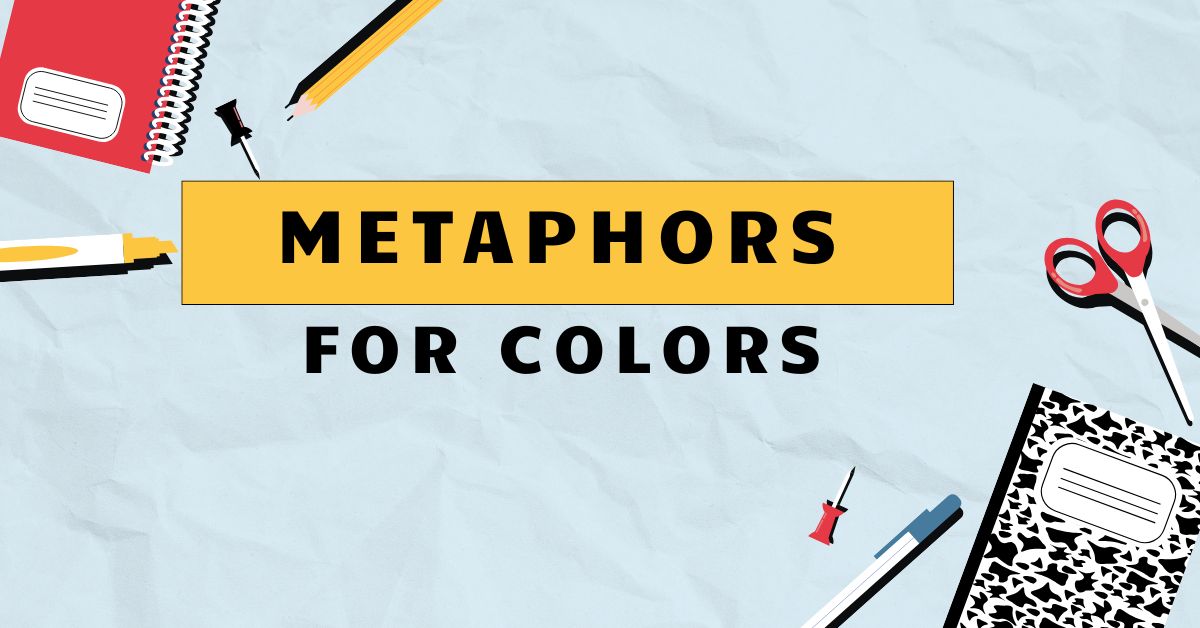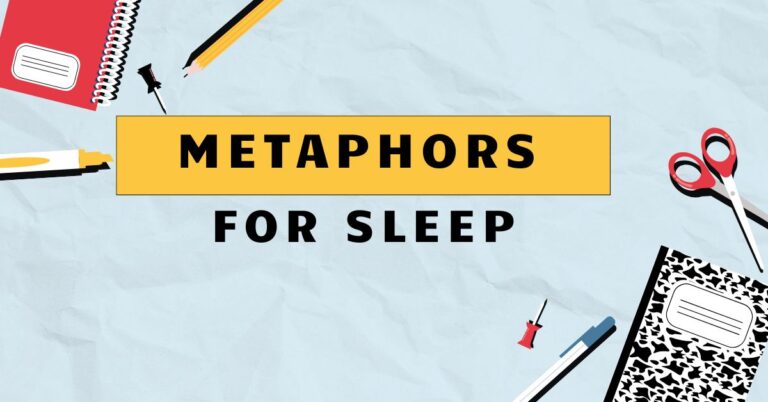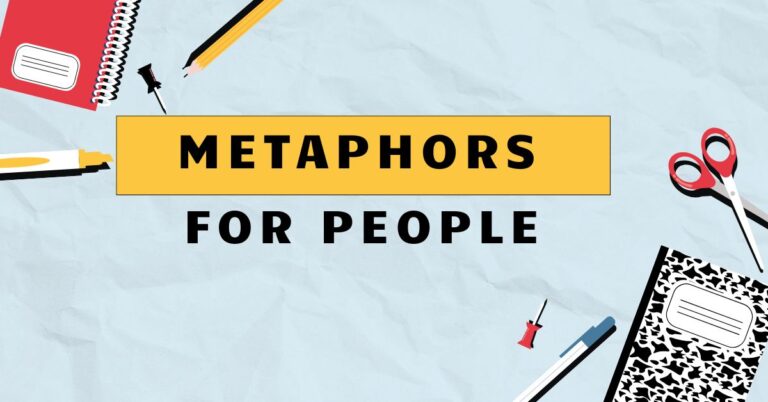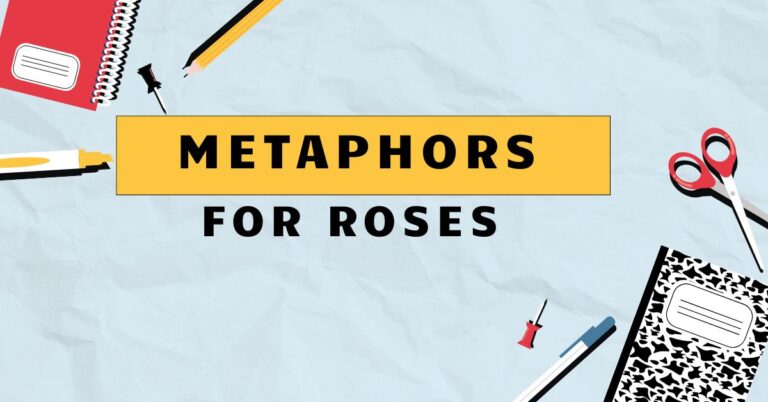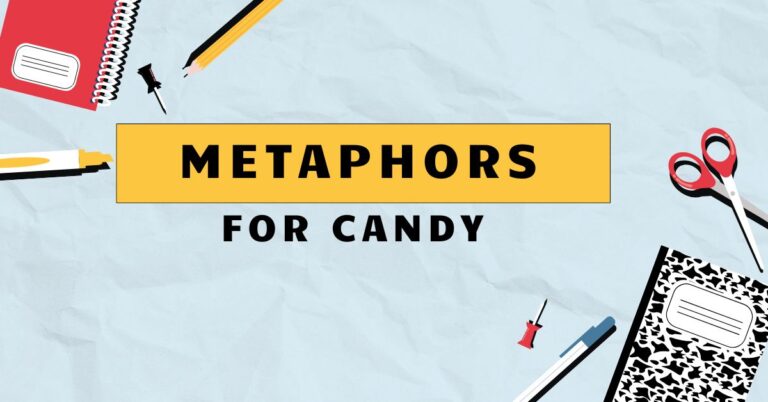43 Metaphors for Colors: Enhancing Descriptive Language
Understanding how to use metaphors for colors is crucial for enhancing descriptive writing and communication. This skill allows individuals to move beyond simple color naming and evoke deeper emotions and imagery.
This article will benefit students, writers, and anyone looking to enrich their vocabulary and descriptive abilities in English. By mastering this concept, you can transform ordinary descriptions into vivid and engaging narratives.
Table of Contents
- Introduction
- Definition of Metaphors for Colors
- Structural Breakdown
- Types and Categories of Color Metaphors
- Examples of Metaphors for Colors
- Usage Rules for Color Metaphors
- Common Mistakes
- Practice Exercises
- Advanced Topics
- FAQ
- Conclusion
Definition of Metaphors for Colors
A metaphor is a figure of speech that directly compares two unrelated things, asserting that oneisthe other to suggest a likeness or analogy. When applied to colors, metaphors go beyond simply naming the color.
They use comparisons to evoke deeper meanings, emotions, or sensory experiences associated with that color. These metaphors are not literal; rather, they are imaginative and suggestive, adding richness and depth to descriptions.
The function of color metaphors is to enhance communication by creating vivid imagery and emotional resonance. Instead of merely stating a color, a metaphor can convey the feeling or essence of that color.
This technique is frequently used in literature, poetry, and creative writing to make the text more engaging and impactful. They can also be found in everyday language to help describe feelings, situations, or objects in a more expressive way.
In context, color metaphors can be used to describe anything from a person’s mood to the atmosphere of a scene. For example, instead of saying “He was angry,” one might say, “His face was a crimson storm.” This conveys not just the color red, but also the intensity and turbulence of his anger.
The effectiveness of a color metaphor depends on the audience’s shared understanding of the symbolic meanings associated with different colors. Understanding these associations is key to using color metaphors effectively.
Structural Breakdown
The structure of a color metaphor typically involves two key elements: thecoloritself and thecomparative element. The color acts as the subject, while the comparative element provides the metaphorical link.
This link can be a noun, adjective, or even a short phrase that shares some quality or characteristic with the color.
The basic pattern is often structured as follows: [Subject] is [Color Metaphor]. For instance, in the phrase “Her eyes were pools of emerald,” “eyes” is the subject, and “pools of emerald” is the color metaphor, linking the green color of emeralds to the depth and allure of her eyes.
Another common pattern involves using color as an adjective: [Adjective] [Noun]. An example is “golden opportunity,” where “golden” (referring to the color gold) modifies “opportunity,” suggesting something precious and valuable.
Effective color metaphors often rely on implied comparisons rather than explicit ones. The reader or listener is expected to make the connection between the color and the comparative element based on shared cultural or emotional associations.
For example, describing a character as having a “heart of gold” implies that they are kind and generous, without explicitly stating the color’s connection to these qualities. The success of this structure lies in its ability to evoke imagery and emotion through subtle association.
Types and Categories of Color Metaphors
Color metaphors can be categorized based on the type of comparison they make. Recognizing these categories can help you understand and create more effective and nuanced descriptions.
Emotional Associations
This type of metaphor links colors to specific emotions. Colors are often strongly associated with feelings, and these metaphors leverage those connections.
For instance, red is commonly associated with anger, passion, or excitement, while blue is often linked to sadness, tranquility, or peace. These associations are culturally influenced but widely recognized.
Nature Comparisons
This category uses elements from nature to describe colors. This could involve comparing a color to plants, animals, minerals, or natural phenomena.
Examples include “sky blue,” “forest green,” or “blood red.” These metaphors are often vivid and relatable, as they draw on familiar images from the natural world.
Abstract Qualities
These metaphors connect colors to abstract concepts or qualities. For example, gold might represent wealth or success, white could symbolize purity or innocence, and black might signify mystery or darkness.
These associations are more symbolic and require a deeper understanding of cultural connotations.
Sensory Crossings
This type of metaphor combines color with other senses, such as sound, taste, or smell. This creates a more immersive and synesthetic experience for the reader.
Examples might include describing a color as “bitter yellow” or “loud red.” These metaphors are often more creative and unconventional.
Examples of Metaphors for Colors
The following examples illustrate how metaphors can be used to describe colors in various contexts. They are organized by the categories described above to provide a comprehensive overview of the possibilities.
Emotional Examples
These examples show how colors can be used metaphorically to express different emotions. Colors and emotions are often closely linked in human perception and cultural understanding.
The following table shows examples of emotional color metaphors.
| Metaphor | Color | Emotion Evoked |
|---|---|---|
| A face as red as fury | Red | Intense anger |
| Feeling blue | Blue | Sadness, melancholy |
| Green with envy | Green | Jealousy, resentment |
| A golden heart | Gold | Kindness, generosity |
| Black mood | Black | Depression, despair |
| Seeing red | Red | Rage, frustration |
| White as a ghost | White | Fear, shock |
| Purple with rage | Purple | Extreme anger |
| Gray with worry | Gray | Anxiety, concern |
| Pink with embarrassment | Pink | Shame, awkwardness |
| A crimson tide of anger | Crimson | Overwhelming rage |
| Azure dreams of peace | Azure | Tranquility, serenity |
| Emerald hopes for the future | Emerald | Optimism, anticipation |
| Ebony thoughts of despair | Ebony | Hopelessness, gloom |
| Scarlet sins of the past | Scarlet | Guilt, remorse |
| His spirit was painted with ochre sadness | Ochre | Dull, muted sorrow |
| Her joy sparkled with vermillion delight | Vermillion | Bright, vivid happiness |
| His words dripped with chartreuse bitterness | Chartreuse | Sharp, acidic resentment |
| The room filled with cerulean calm | Cerulean | Peaceful, serene atmosphere |
| She wore a dress the color of saffron longing | Saffron | Deep, intense desire |
| The air hung heavy with indigo melancholy | Indigo | Profound sadness |
| His laughter rang with tangerine glee | Tangerine | Energetic, joyful happiness |
| Her eyes reflected the sepia tones of nostalgia | Sepia | Wistful longing for the past |
| The city glowed with amber promises | Amber | Warm, inviting prospects |
| He carried the burden of umber regret | Umber | Heavy, somber remorse |
Nature Examples
These metaphors use elements from the natural world to describe colors. This can create vivid and relatable imagery.
The following table shows examples of nature-based color metaphors.
| Metaphor | Color | Natural Element |
|---|---|---|
| Sky blue | Blue | The color of the sky |
| Forest green | Green | The color of a forest |
| Blood red | Red | The color of blood |
| Golden sunset | Gold | The color of a sunset |
| Coal black | Black | The color of coal |
| Snow white | White | The color of snow |
| Rose pink | Pink | The color of a rose |
| Ocean blue eyes | Blue | The color of the ocean |
| Grass green field | Green | The color of grass |
| Cherry red lips | Red | The color of cherries |
| Sunflower yellow dress | Yellow | The color of sunflowers |
| Midnight blue sky | Blue | The color of the midnight sky |
| Emerald green valley | Green | The color of emeralds and valleys |
| Ruby red wine | Red | The color of rubies and wine |
| Sand beige beach | Beige | The color of sand |
| Lavender purple fields | Purple | The color of lavender flowers |
| Olive green skin | Green | The color of olives |
| Coral pink reefs | Pink | The color of coral reefs |
| Azure blue waters | Azure | Bright blue waters |
| Crimson red leaves | Red | Deep red leaves |
| Saffron yellow spices | Yellow | The color of saffron |
| Umber brown earth | Brown | The color of earth |
| Teal blue feathers | Teal | The color of teal feathers |
| Silver gray mist | Gray | The color of silver and mist |
| Bronze brown bark | Brown | The color of bronze and bark |
Abstract Examples
These metaphors connect colors to abstract concepts or qualities. This can add depth and symbolism to descriptions.
The following table shows examples of abstract color metaphors.
| Metaphor | Color | Abstract Quality |
|---|---|---|
| Heart of gold | Gold | Kindness, generosity |
| White lie | White | Harmless deception |
| Black market | Black | Illegality, secrecy |
| Green light | Green | Permission, approval |
| Gray area | Gray | Ambiguity, uncertainty |
| Red tape | Red | Bureaucracy, obstacles |
| Blue blood | Blue | Nobility, aristocracy |
| Silver lining | Silver | Hope, optimism |
| A golden opportunity | Gold | Valuable chance |
| A white flag of surrender | White | Submission, peace |
| A black sheep of the family | Black | Outcast, nonconformist |
| A green thumb | Green | Gardening skill |
| A gray cloud of doubt | Gray | Skepticism, uncertainty |
| A red herring | Red | Distraction, misleading clue |
| Blue-collar worker | Blue | Working class |
| A golden age | Gold | Prosperity, flourishing |
| A white knight | White | Savior, protector |
| Blacklisted | Black | Disapproved, banned |
| Green with progress | Green | Advancement, growth |
| A gray matter | Gray | Intelligence, brainpower |
| Seeing the world through rose-colored glasses | Rose | Optimism, naivety |
| Having a black and white view of the world | Black and White | Simple, uncomplicated |
| Feeling the blues | Blues | Sadness, depression |
| Giving the green light | Green | Permission, approval |
Sensory Examples
These metaphors combine color with other senses, such as sound, taste, or smell. This creates a more immersive and synesthetic experience.
The following table shows examples of sensory color metaphors.
| Metaphor | Color | Sensory Experience |
|---|---|---|
| Bitter yellow | Yellow | Taste |
| Loud red | Red | Sound |
| Sweet pink | Pink | Taste |
| Sharp green | Green | Touch |
| Soft blue | Blue | Touch |
| Smoky gray | Gray | Smell |
| Earthy brown | Brown | Smell |
| A piercing blue gaze | Blue | Sight & Emotion |
| A velvety black night | Black | Touch & Time |
| A fragrant lavender field | Lavender | Smell & Nature |
| A tangy orange burst of flavor | Orange | Taste & Sensation |
| A whispering white cloud | White | Sound & Nature |
| A grating yellow screech | Yellow | Sound & Emotion |
| A smooth silver surface | Silver | Touch & Appearance |
| A pungent green aroma | Green | Smell & Nature |
| A mellow blue melody | Blue | Sound & Emotion |
| A crunchy brown leaf | Brown | Sound & Nature |
| A stinging red burn | Red | Touch & Sensation |
| A creamy white texture | White | Touch & Appearance |
| A buzzing yellow energy | Yellow | Sound & Emotion |
| A deep indigo silence | Indigo | Sound & Emotion |
| A bright crimson scream | Crimson | Sound & Emotion |
Usage Rules for Color Metaphors
Using color metaphors effectively requires an understanding of both the literal and figurative meanings of colors. It’s important to choose metaphors that are appropriate for the context and audience.
Here are some key rules to follow:
- Consider Cultural Associations: Colors can have different meanings in different cultures. Be aware of these variations to avoid miscommunication. For example, white is associated with purity in Western cultures but with mourning in some Eastern cultures.
- Be Consistent: Maintain consistency in your use of color metaphors throughout a text or conversation. Shifting the meaning of a color abruptly can confuse your audience.
- Avoid Clichés: While some color metaphors are common, try to avoid overused phrases like “green with envy” or “feeling blue.” Strive for originality and creativity.
- Use Sparingly: Color metaphors can be powerful, but overuse can make your writing seem forced or artificial. Use them judiciously to enhance your descriptions.
- Match the Tone: The color metaphor should match the overall tone of your writing. A serious or formal text might call for more subtle and nuanced metaphors, while a lighthearted or informal text might allow for more playful and imaginative comparisons.
Exceptions and Special Cases:Some color metaphors have become so ingrained in the English language that they are considered idiomatic expressions. These expressions often have a fixed meaning that may not be immediately obvious from the literal meanings of the words.
For example, “red tape” refers to bureaucratic obstacles, and “blue blood” refers to aristocracy. These idiomatic expressions should be used with caution, as they may not be universally understood.
Common Mistakes
Using color metaphors incorrectly can lead to confusion or misinterpretation. Here are some common mistakes to avoid:
- Misunderstanding Cultural Connotations: Using a color metaphor that has a different meaning in a particular culture can be offensive or confusing.
- Overusing Color Metaphors: Too many color metaphors can make your writing seem cluttered and unnatural.
- Mixing Metaphors: Combining unrelated metaphors can create nonsensical or contradictory images.
- Using Inappropriate Metaphors: Choosing a metaphor that doesn’t fit the context or tone of your writing can be jarring.
Here are some examples of common mistakes and how to correct them:
| Incorrect | Correct | Explanation |
|---|---|---|
| “He was green with happiness.” | “He was beaming with happiness.” | Green is usually associated with envy, not happiness. |
| “The black sky was as bright as the sun.” | “The night sky was filled with stars.” | Black and bright are contradictory. |
| “She had a heart of red.” | “She had a passionate heart.” | While red can symbolize passion, “heart of red” is not a common or clear metaphor. |
Practice Exercises
Test your understanding of color metaphors with these exercises. Identify the meaning of the color metaphor in each sentence or create your own.
Exercise 1: Identify the Meaning
For each sentence, identify the meaning of the color metaphor.
| Question | Answer |
|---|---|
| 1. The company received the green light for the project. | Permission, approval |
| 2. He was feeling blue after the breakup. | Sadness, melancholy |
| 3. The politician promised a golden age of prosperity. | Prosperity, flourishing |
| 4. The investigation uncovered a gray area in the contract. | Ambiguity, uncertainty |
| 5. She gave him a white lie to spare his feelings. | Harmless deception |
| 6. The market was operating in the black. | Illegally or secretly |
| 7. He was seeing red after they insulted his family. | Rage, frustration |
| 8. The author painted the scene in rosy hues. | Optimistic, idealistic |
| 9. The investors were wary of the red flags. | Danger signals, warnings |
| 10. The company was hemorrhaging money and quickly going into the red. | Debt, financial loss |
Exercise 2: Create Your Own Metaphors
Create a sentence using a color metaphor for each of the following emotions or situations.
| Emotion/Situation | Your Metaphor |
|---|---|
| 1. Anger | His face turned the color of a volcanic eruption when he heard the news. |
| 2. Happiness | Her laughter was as bright and yellow as the summer sun. |
| 3. Fear | His skin went as white as a sheet when he saw the shadow. |
| 4. Jealousy | Her eyes flashed a venomous green when she saw his success. |
| 5. Peace | The room was filled with a calming blue silence. |
| 6. Uncertainty | The situation was as murky and gray as a fog-covered morning. |
| 7. Hope | Her heart fluttered with the emerald green hope of spring. |
| 8. Despair | His soul was shrouded in the blackest night of despair. |
| 9. Excitement | The crowd was a sea of vibrant, red enthusiasm. |
| 10. Serenity | The lake reflected the azure serenity of the sky. |
Advanced Topics
For advanced learners, exploring the nuances of color symbolism and its application in literature and art can provide a deeper understanding of color metaphors. Consider researching the following:
- Color Symbolism in Different Cultures: Investigate how different cultures interpret and use colors symbolically.
- The Use of Color in Literature: Analyze how authors use color metaphors to create mood, develop characters, and convey themes.
- Color Theory in Art: Study how artists use color to evoke emotions, create perspective, and convey meaning in their works.
- Synesthesia and Color: Explore the neurological phenomenon of synesthesia, where individuals experience colors in response to other sensory stimuli.
FAQ
- What is the difference between a simile and a metaphor for colors?
A simile uses “like” or “as” to make a comparison (e.g., “Her eyes were as blue as the sky”). A metaphor directly equates two things (e.g., “Her eyes were pools of the sky”). Metaphors are often considered more powerful and direct.
- How can I avoid clichés when using color metaphors?
Focus on creating original and unexpected comparisons. Instead of saying “green with envy,” try “envy painted his face with a sickly chartreuse hue.” Use specific and vivid imagery to make your metaphors more unique.
- Are color metaphors universal, or do they vary by culture?
Color metaphors are heavily influenced by culture. For example, white symbolizes purity in Western cultures but mourning in some Eastern cultures. Be mindful of these differences when communicating with people from different backgrounds.
- Can I use color metaphors in formal writing?
Yes, but use them judiciously. In formal writing, clarity and precision are paramount. Choose color metaphors that are subtle and enhance your descriptions without being distracting or overly flowery.
- How do I choose the right color metaphor for a particular situation?
Consider the context, tone, and audience. What emotion or idea are you trying to convey? What associations does the color have in that context? Choose a metaphor that is appropriate and effective for your intended message.
- What if I don’t know the cultural associations of a particular color?
Do some research. Look up the color in a dictionary of symbols or consult with someone who is familiar with the culture in question. It’s better to be informed than to risk miscommunication or offense.
- Can I create my own color metaphors, or should I stick to established ones?
Absolutely, create your own! The most effective color metaphors are often original and imaginative. Don’t be afraid to experiment and find new ways to use color to enhance your writing.
- How can I improve my use of color metaphors?
Practice, practice, practice! Read widely and pay attention to how authors use color metaphors in their writing. Experiment with different combinations and ask for feedback from others. The more you use color metaphors, the better you will become at crafting them effectively.
- Are there any colors that are difficult to use metaphorically?
Some colors, like beige or gray, might seem less evocative than vibrant colors like red or blue. However, even these colors can be used effectively with the right context and imagination. For example, “a gray mood” or “a beige existence” can convey a sense of dullness or monotony.
- How can I ensure my color metaphors are clear and understandable?
Provide enough context. Make sure the reader or listener has enough information to understand the connection between the color and the thing it’s being compared to. Avoid using overly obscure or abstract metaphors that might confuse your audience.
Conclusion
Mastering the use of metaphors for colors is a valuable skill that can greatly enhance your descriptive writing and communication. By understanding the emotional, natural, and abstract associations of different colors, you can create vivid imagery and evoke deeper meanings in your work.
Remember to be mindful of cultural connotations, avoid clichés, and use color metaphors judiciously to achieve the greatest impact.
Continue to practice and experiment with color metaphors to refine your skills and develop your own unique style. Read widely, pay attention to how others use color in their writing, and don’t be afraid to try new things.
With dedication and creativity, you can transform ordinary descriptions into extraordinary expressions of color and emotion. Embrace the power of color metaphors and unlock a world of possibilities in your writing.

